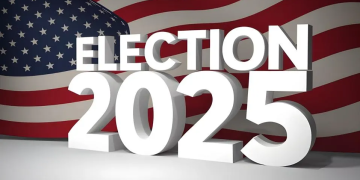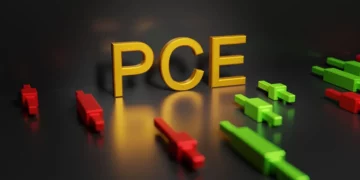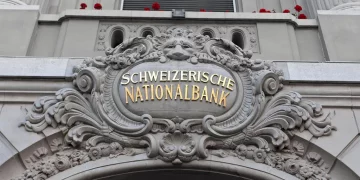SPAC 2.0: The 2025 Revival Story Begins
Just a few years ago, Special Purpose Acquisition Companies (SPACs) were the darlings of speculative finance. From 2020 through early 2021, blank-check firms flooded the market, promising investors fast-track access to high-growth private companies. But then came the crash: high-profile flops, regulatory crackdowns, excessive redemptions, and a rising rate environment that crushed the risk-on appetite. By 2022, SPACs had turned toxic.
Fast forward to mid-2025, and something curious is happening. SPAC activity is no longer dead. In fact, new filings are quietly ticking up. High-quality sponsors are returning—cautiously—and a few successful de-SPAC mergers are once again catching investor attention. Is this a true renaissance or just a temporary bounce? To answer that, we need to dissect the state of SPACs in three parts: deal volume and structure, redemption behavior, and how investors can protect themselves amid the renewed hype.
Merger Activity Is Recovering—but With a New Discipline
The SPAC pipeline in 2025 looks very different from the chaos of four years ago. For one, deal quantity is down sharply from the 2021 peak of over 600 filings, but quality appears to be improving. As of May 2025, 47 SPAC IPOs have launched year-to-date, compared to just 22 in the same period last year. Notably, many of these new vehicles are targeting sectors with clear secular growth narratives: climate tech, space and defense, fintech infrastructure, and AI-driven logistics.
Unlike the first wave, today’s sponsors often include experienced operators or former PE professionals with operational credibility. They are taking smaller bites, too: average SPAC sizes have declined to around $130 million from the $250 million average in 2021, reflecting a shift toward more realistic post-merger valuations.
Perhaps most importantly, many of the new SPACs are structured with better alignment—sponsor promote shares are vesting based on performance milestones, rather than simply surviving a deal close. This “SPAC 2.0” model is designed to restore trust, particularly among institutional investors who were burned by earlier boom-bust cycles.
Redemption Rates Tell a Cautious but Evolving Story
One of the most critical data points in SPAC performance is the redemption rate—the percentage of investors who opt to pull their cash out at the time of a proposed merger. High redemption rates, often above 90%, characterized the post-2021 environment, leaving de-SPAC companies starved of the capital they were promised.
In 2025, redemption rates remain high—but are falling. For the first quarter of this year, the average redemption rate across completed deals dropped to 67%, down from 89% a year prior. While still elevated, this decline suggests that investors are beginning to differentiate between “junk” SPACs and deals with solid fundamentals.
Some recent exceptions prove the point. A climate-focused SPAC merging with an EV battery recycler saw only a 38% redemption rate after releasing full audited financials and landing a strategic investment from a global automaker. Another AI analytics platform backed by a prominent hedge fund completed its de-SPAC with just 22% redemptions, as its recurring revenue profile and path to profitability won over retail and institutional investors alike.
Still, the majority of SPAC deals continue to suffer from trust issues. The legacy of hype-driven projections, cash burn, and sponsor misalignment has not fully faded. For SPACs to reenter the mainstream, redemption rates will need to fall further, and transparency must become the norm.

A Due Diligence Checklist for Investors in 2025
If you’re tempted to dabble in SPACs again, proceed with caution—and a checklist. The lessons from the first wave remain painfully relevant. Here are the key filters smart investors are applying in 2025:
- Who is the sponsor? Background, track record, and skin in the game matter. A sponsor with deep domain expertise and operating experience beats a celebrity-backed nameplate every time.
- Is there PIPE support? Private Investment in Public Equity (PIPE) financing can validate a SPAC deal’s pricing and provide post-merger liquidity. Look for reputable PIPE backers—family offices, hedge funds, or strategic corporate partners.
- Redemption dynamics and backstop provisions: Does the deal include backstop capital or sponsor-funded redemption protection? These features are increasingly common and can buffer against mass redemptions.
- Revenue quality: Avoid cash-burning moonshots with no visibility on margins. Focus on companies with recurring revenue, unit economics, and clear paths to cash flow positivity within 12–18 months post-close.
- Post-merger governance: Will the sponsor continue to play a role? Is there board independence? Look for structures that empower professional management, not just promoters.
- Lock-up periods: Watch for insider lock-up terms that align incentives. Deals where insiders can dump shares 30 days post-merger are red flags.
- Audit trail and SEC scrutiny: Only consider SPACs that voluntarily file S-4s with extensive due diligence documentation and are fully audited. Regulatory scrutiny remains high, and transparency is king.
Regulatory Landscape: No Longer a Wild West
The SEC’s 2023 reforms fundamentally altered the SPAC game. New rules requiring detailed disclosures, forward projection limitations, and enhanced liability for sponsors created a compliance burden—but also a credibility premium. SPACs that are serious about long-term value are embracing this new rigor, while fly-by-night operators have largely exited the space.
There is also growing legal pressure around fiduciary responsibility. Shareholder lawsuits in failed SPACs—particularly those involving fraud or gross overvaluation—have prompted sponsors to raise their game. Many now partner with legal and accounting advisors from the outset to ensure defensible business combinations.
While critics argue that these regulations could “kill the product,” the emerging evidence suggests they may actually be saving it—by forcing a much-needed cleanse and narrowing the field to quality players.
SPAC ETFs and Secondary Market Performance
For investors wary of individual SPAC picks, 2025 offers a few diversified options. SPAC-focused ETFs like the Defiance Next Gen SPAC Derived ETF or the Accelerate Arbitrage Fund have rebalanced toward lower-volatility, post-de-SPAC names with actual operating results. Returns are mixed—many still trail the broader market—but volatility has declined, and NAV premiums have narrowed.
Interestingly, secondary market trading for some high-performing de-SPACs has stabilized. A few are even outperforming the S&P 500 YTD. These exceptions are still rare, but they show what’s possible when execution matches expectations. The days of doubling your money on announcement alone are long gone, but selective opportunities do exist for those willing to dig deep.
Conclusion: From Mania to Maturity?
SPACs may never regain the euphoria of their 2021 heyday—and that’s a good thing. The reckoning was painful but necessary. 2025’s SPAC revival, if it holds, will likely resemble a quieter, more disciplined iteration: fewer deals, tighter structures, higher standards, and more accountability.
Investors should treat SPACs as they would any other complex financial product—neither blindly trusting nor reflexively dismissing. With the right due diligence and risk awareness, SPACs can offer a unique path to exposure in high-growth private markets. But they are not a magic shortcut to riches. In 2025, the question is no longer whether SPACs are good or bad—it’s whether they’ve grown up. And for now, the answer is: cautiously, yes.














































